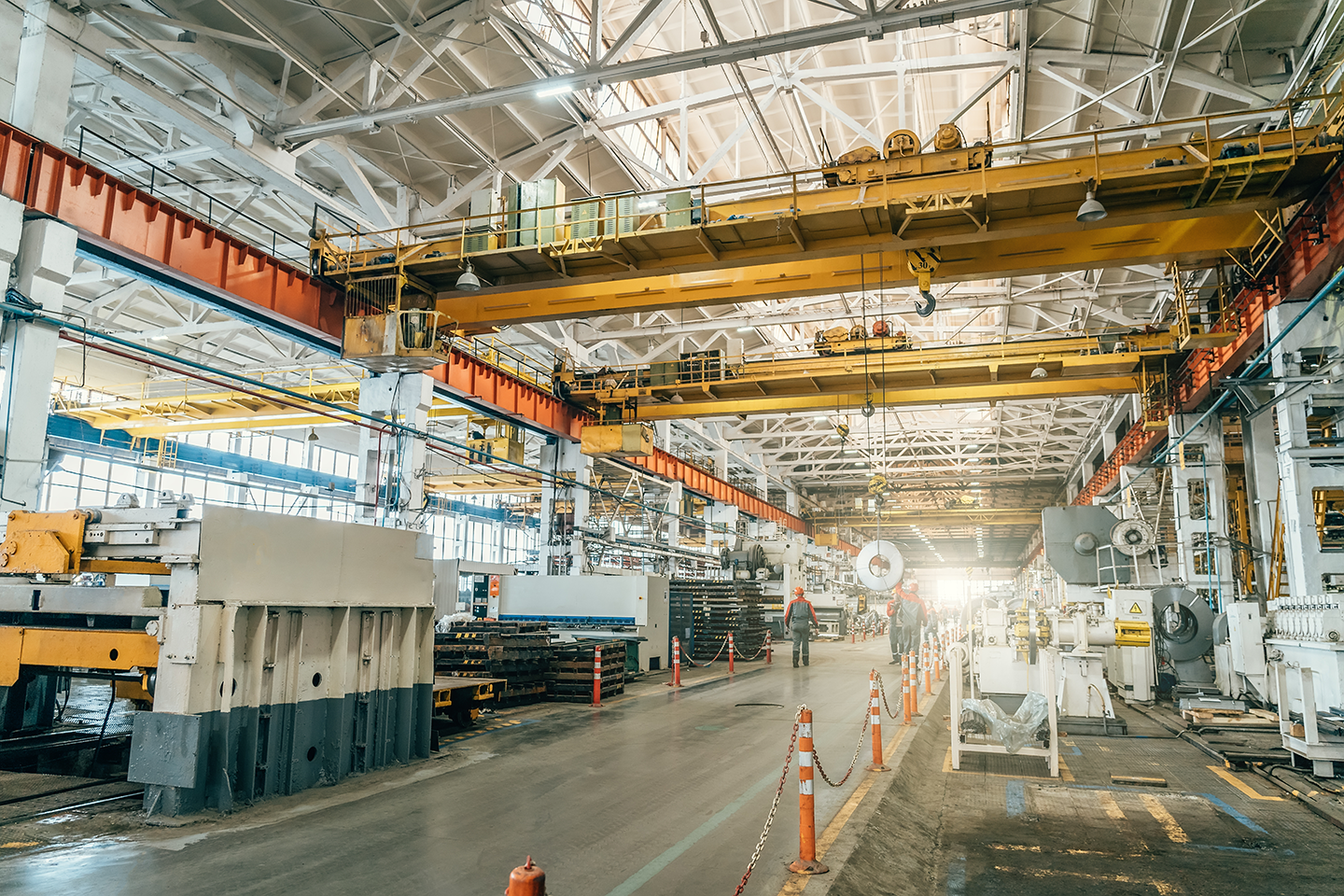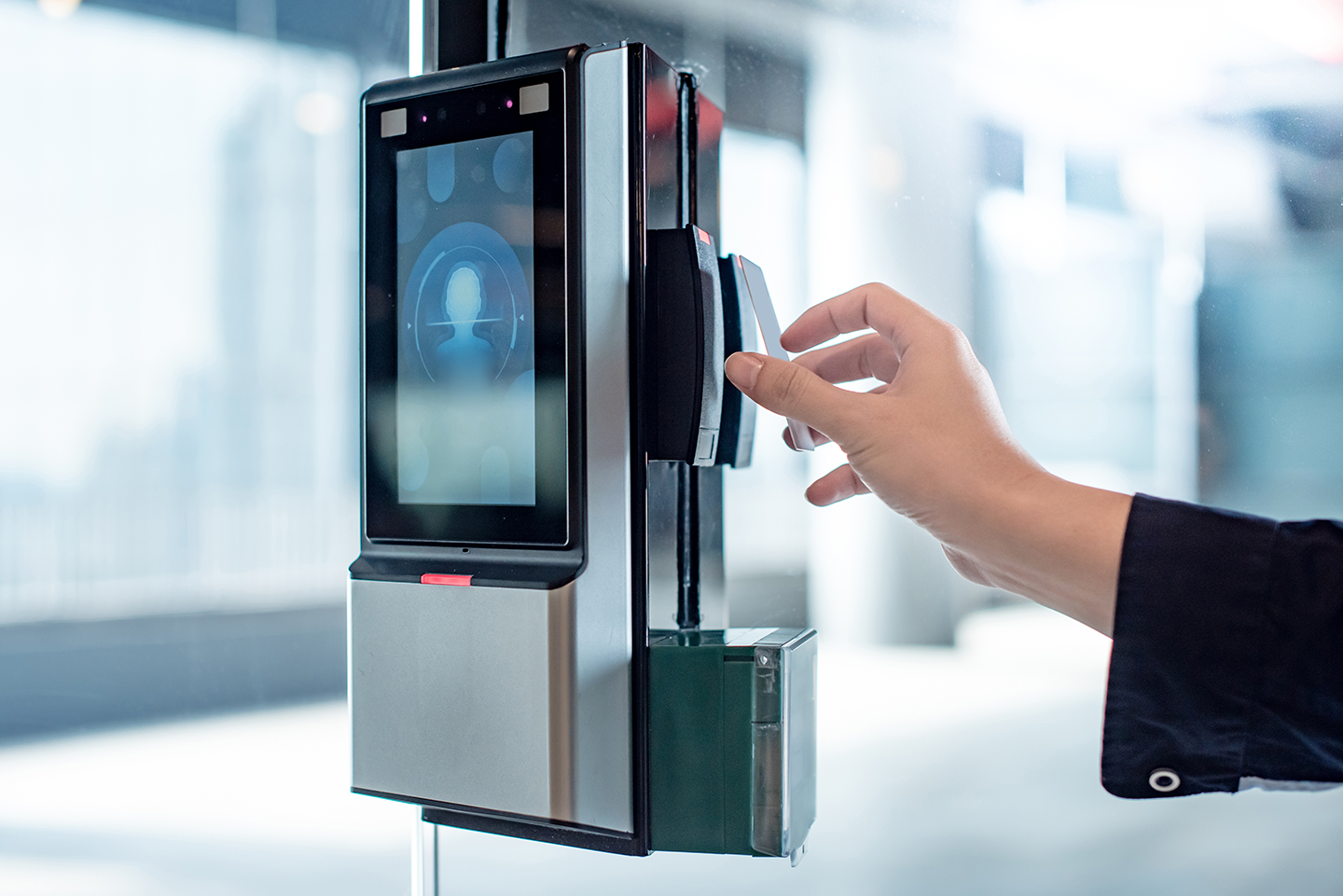
08 Feb The Ultimate Guide to BAS (Building Automation Systems) in 2014
I. An Introduction to Building Automation Systems
What is a BAS?
Building Automation Systems (BAS) are integral components of modern infrastructure, designed to manage and control various building functions such as heating, ventilation, air conditioning (HVAC), lighting, and security systems. These sophisticated networks of hardware and software optimize building performance, enhance occupant comfort, and reduce energy consumption.
The idea of automating building functions has been around since the 1970s, starting with the first energy management systems, and later, computers being used to control simple industrial plant operations and scheduling.
Back then, these systems were pretty basic, mainly handling straightforward tasks such as regulating temperature and managing lighting. But as computer technology advanced and microprocessors came onto the scene, Building Automation Systems (BAS) have transformed. They’ve grown into sophisticated, smart systems capable of overseeing a broad spectrum of building functions.
At their core, BAS function by continuously monitoring and controlling building environmental parameters through a series of interconnected sensors, controllers, and actuators.
- Sensors gather data on various conditions, such as temperature, humidity, light levels, and occupancy.
- This data is then analyzed by controllers to make real-time decisions on adjusting the building’s mechanical and electrical systems to maintain optimal performance levels.
- Actuators, which can be anything from valves to switches, execute these control decisions.
The intelligence of a BAS lies in its ability to automate routine tasks, such as adjusting the heating schedule based on occupancy patterns or dimming lights when natural sunlight is sufficient. By doing so, BAS significantly improve energy efficiency, leading to substantial cost savings over time. Moreover, they contribute to creating safer, more comfortable environments for occupants through improved air quality, consistent temperature control, and enhanced security measures.

In recent years, the scope of BAS has expanded further with the integration of the Internet of Things (IoT), allowing for even greater efficiency and control. IoT-enabled devices can communicate and interact over the internet, offering remote access and management capabilities to building operators. This level of connectivity not only simplifies building operations but also opens up new possibilities for energy savings, predictive maintenance, and occupant experience enhancement.
These systems mark a significant advancement in the management and operation of buildings, from residential and commercial to industrial and even healthcare applications. Utilizing cutting-edge technology, BAS are setting the stage for the development of buildings that are not only smarter but also more sustainable, capable of adapting to the requirements of occupants and the broader environmental context.
II. Core Components of BAS
The effectiveness of Building Automation Systems (BAS) rests on the synergy between their core components: sensors, controllers, output devices, and communication protocols. Each plays a vital role in the intelligent management of building operations, ensuring environments are both efficient and responsive to occupant needs. Let’s take a closer look at the parts of a BAS:
Sensors
Sensors are the eyes and ears of BAS, continuously monitoring environmental conditions and occupant activities within a building. They can collect data on various parameters, such as:
- Temperature
- Humidity
- Light levels
- Carbon dioxide concentrations
- Motion
This data is crucial for making informed decisions about building operations. For example, temperature sensors help maintain comfortable conditions, while motion sensors can trigger lights to turn off in unoccupied spaces, conserving energy.
Some types of sensors include:
- Occupancy Sensors: Detecting human presence in rooms and spaces to optimize energy usage and enhance security.
- CO2 Sensors: Monitoring carbon dioxide levels to ensure adequate ventilation and air quality for occupant health and comfort.
- Occupancy Counting Sensors: Counting the number of occupants in specific areas for space utilization analysis and optimization.
- Light Sensors: Gauging ambient light levels to adjust artificial lighting accordingly, promoting energy efficiency and occupant well-being.
- Smoke and Fire Detectors: Detecting the presence of smoke or fire to trigger immediate alerts and emergency response actions, safeguarding lives and property.
- Water Leak Sensors: Identifying leaks in plumbing systems to prevent water damage and minimize wastage, contributing to cost savings and environmental sustainability.
- Vibration Sensors: Monitoring equipment and structural integrity to detect anomalies and prevent potential failures, ensuring operational continuity and safety.
- Noise Sensors: Measuring noise levels to assess and mitigate environmental impacts on occupant comfort and productivity.
Controllers
Controllers are like the brain of a Building Automation System (BAS). They take in information from sensors, just like our brains process signals from our senses.
Once they have this information, controllers make decisions based on rules or instructions they’ve been given. In other words, they receive inputs, apply logic, and then send commands to output devices.
Controllers range from simple, single-function devices to complex, networked systems that manage multiple building functions. They can adjust HVAC settings, dim or brighten lighting, and activate security systems, all based on the data received from sensors.
Output Devices
Output devices, or actuators, execute the commands from controllers. They are the hands that carry out actions within the BAS, directly influencing the building’s mechanical and electrical systems.
Here are some examples of output devices and their roles within a BAS:
- Valves: These devices regulate the flow of water to heating and cooling systems. By opening or closing, they control the amount of hot or cold water that enters a space, helping to maintain the desired temperature.
- Dampers: Dampers are responsible for adjusting the flow of air within ducts of HVAC systems. By opening or closing, they regulate the amount of air that is distributed throughout the building, ensuring proper ventilation and temperature control.
- Switches: Switches control the operation of lighting systems. They can turn lights on or off, adjust brightness levels, or activate specific lighting zones based on commands received from controllers, contributing to energy efficiency and occupant comfort.
- Relays: Relays are electrical switches that control the flow of electricity to various devices and systems. They can turn equipment on or off, regulate power levels, turn electric generators on/off, and manage electrical loads, ensuring safe and efficient operation of building systems.
- Motors: Motors are used to drive mechanical systems such as fans, pumps, and actuators. They convert electrical energy into mechanical motion, allowing for precise control over equipment operation and performance.
These devices are critical for translating the automated decisions of the BAS into tangible changes in the building environment.
Communication Protocols
Communication protocols are the languages that allow components within a BAS to talk to each other and to central management systems. They are essential for the seamless integration and interoperability of different devices and systems within a BAS.
Until recently, there were no industry standard network protocols for BAS. There were instead many different proprietary systems provided by a long list of entities. Today, common protocols include BACnet, LonWorks, and Modbus, each with its own set of rules for data exchange.
- BACnet: A widely used protocol designed for building automation and control networks, allowing devices from different manufacturers to communicate.
- LonWorks: A proprietary protocol developed by Echelon Corporation for networking devices in building automation systems.
- Modbus: An open-source protocol commonly used for serial communication between electronic devices, particularly in industrial building automation applications.
The choice of protocol can affect the system’s flexibility, scalability, and compatibility with other devices, making it a crucial consideration in BAS design.
The Interconnected System
Together, these components form an interconnected system that automates and optimizes building operations. The process begins with sensors collecting data and sending it to controllers, which then analyze this information to make decisions. These decisions are executed through output devices, directly impacting the building’s systems. Throughout this process, communication protocols ensure that data flows smoothly between components, enabling real-time management and control.

This interconnectedness not only allows for the automation of routine tasks but also enables advanced BAS features like predictive maintenance, where the system can identify potential issues before they become problems.
For instance, by monitoring the performance of HVAC equipment, a BAS can alert maintenance staff to inefficiencies or failures, allowing for preemptive repairs that minimize downtime and extend equipment life. Some examples of real world situations like this include:
- Lighting System Anomalies: Anomalies are detected in the lighting system, such as flickering lights or irregular brightness levels. These issues may indicate faulty wiring or failing ballasts. The BAS identifies the problem areas and alerts maintenance personnel to conduct inspections and repairs, ensuring uninterrupted illumination and preventing safety hazards.
- HVAC Efficiency Monitoring: The BAS continuously monitors the performance of HVAC equipment, including air handlers and chillers. A gradual decline in efficiency is detected, indicating potential issues such as clogged filters or worn-out components. Maintenance staff are alerted to conduct proactive servicing, preventing system breakdowns and optimizing energy usage.
- Security System Faults: The BAS receives notifications of irregularities in the security system, such as malfunctioning door sensors or unauthorized access attempts. Maintenance staff are promptly notified to investigate and resolve the issues, preventing security breaches and ensuring the safety of building occupants and assets.
- Water Leakage Detection: Sensors detect abnormal water flow patterns or moisture levels in plumbing systems. This may indicate leaks or pipe ruptures. The BAS alerts maintenance personnel to investigate the source of the leaks and take corrective action, preventing water damage and mold growth while conserving water resources.
- Equipment Overloads: The BAS monitors electrical loads and detects instances of equipment overload or power surges. This could be caused by faulty equipment or circuit overloads. Maintenance staff receive alerts to address the issue promptly, preventing equipment damage, electrical fires, and disruptions to building operations.
- Predictive Maintenance Insights: Using historical data and predictive algorithms, the BAS anticipates potential equipment failures based on performance trends. Maintenance schedules are adjusted accordingly to address impending issues before they escalate, maximizing equipment uptime and longevity.
The integration of these core components into a cohesive system is what makes BAS so powerful. By leveraging technology to monitor, control, and optimize building operations, BAS contribute to significant energy savings, reduced operational costs, and improved comfort and safety for occupants.
III. Benefits of Building Automation Systems

As mentioned above, Building Automation Systems (BAS) offer numerous advantages to building owners, operators, and occupants, from energy conservation and operational cost reductions to enhanced comfort and improved security. Let’s take a look at a few of these in more detail:
Energy Efficiency and Cost Savings
One of the primary benefits of BAS is their ability to significantly reduce energy consumption and, consequently, operational costs. By optimizing the operation of HVAC, lighting, and other systems, BAS ensure that energy is used only when and where needed. For example, lighting can be automatically adjusted based on occupancy or daylight levels, and HVAC systems can be controlled to match the specific heating and cooling needs of different zones within a building. This targeted use of resources not only saves energy but also reduces utility bills and contributes to the longevity of building equipment by preventing overuse.
Enhanced Comfort and Safety
BAS contribute to creating a more comfortable environment by maintaining optimal indoor climate conditions. Temperature, humidity, and air quality can be continuously monitored and adjusted to ensure occupant comfort. Moreover, lighting systems can be controlled to provide adequate illumination without glare or excessive brightness, further enhancing the occupant experience.
In terms of safety, BAS play a critical role by integrating fire alarm systems, access control, and surveillance cameras. This integration allows for a coordinated response to emergencies, such as automatically unlocking doors during a fire alarm, disconnecting power to an area during an electrical emergency, or adjusting HVAC settings to prevent the spread of smoke. Additionally, security can be enhanced through controlled access to the building, ensuring only authorized personnel can enter certain areas.
Environmental Impact
By reducing energy consumption, BAS directly contribute to lowering a building’s carbon footprint, making them a key component in efforts to combat climate change. Efficient energy use aligns with sustainability goals and, in many cases, can help buildings achieve green certification standards such as LEED or BREEAM. This not only benefits the environment but can also enhance the building’s value and appeal to environmentally conscious tenants or clients.
IV. Types of Building Automation Systems
BAS can vary widely in their complexity and functionality, ranging from basic systems controlling a single building function to comprehensive systems managing all aspects of building operations.
Proprietary vs. Open Systems
Proprietary systems are developed by specific manufacturers and use unique protocols, making them compatible only with components from the same manufacturer. While this can ensure seamless integration and support, it limits flexibility and may lock building owners into a single vendor.
Open systems, on the other hand, use standard, widely accepted protocols like BACnet or LonWorks, allowing them to integrate with devices and systems from different manufacturers. This openness fosters competition, potentially lowering costs and providing greater flexibility in system design and expansion.
Wired vs. Wireless Technologies
Traditional BAS have relied on wired connections for communication between components. While reliable, installing wired systems can be disruptive and expensive, especially in existing buildings.
Wireless technologies offer a flexible and cost-effective alternative, simplifying installation and allowing for easy system expansion. However, they may be subject to interference and require careful planning to ensure reliable communication.
Cloud-based Solutions
Cloud-based BAS represent the latest advancement in building automation, allowing for remote monitoring and control of building systems through internet-connected devices. This enables building operators to manage systems from anywhere, providing flexibility and immediate access to system performance data.
Cloud solutions also facilitate the aggregation of data from multiple buildings, offering insights that can drive further efficiency improvements across a portfolio of properties.
These various types of BAS provide options to meet the specific needs and constraints of different buildings, from small commercial spaces to large multi-use complexes. Selecting the right type involves balancing factors such as cost, scalability, and the need for integration with existing systems.
V. Applications of BAS
From fine-tuning climate control to safeguarding against security threats, Building Automation Systems encompass a wide range of applications that shape the modern landscape of building management. Let’s look at some examples of the practical applications of BAS, uncovering the diverse ways these systems optimize efficiency, enhance comfort, and ensure security across different domains:
- HVAC Control Systems
- Regulate temperature, airflow, and humidity levels for comfort and energy efficiency.
- Optimize ventilation to ensure fresh air circulation.
- Lighting Management
- Efficiently illuminate spaces with smart sensors and dimming controls.
- Adapt lighting levels to suit different activities and times of day.
- Shading Control
- Control shading to manage sunlight exposure and minimize heat gain, contributing to energy savings and occupant comfort.
- Energy Management
- Optimize energy usage by regulating HVAC operations and managing lighting schedules.
- Identify opportunities for energy savings and efficiency improvements using advanced analytics.
- Security & Access Control
- Monitor building entry points, including doors, windows, and other access points, using sensors and surveillance cameras.
- Analyze real-time video feeds to detect and respond to suspicious activities or security breaches promptly.
- Integrate access control systems with BAS to manage and restrict entry to sensitive or restricted areas, such as server rooms or executive offices.
- Implement biometric authentication methods, such as fingerprint or facial recognition, to enhance security and prevent unauthorized access.
- Control access to restricted areas and respond to intrusions/security breaches promptly.
- Fire Alarm & Life Safety Systems
- Integrate fire alarm systems with BAS for coordinated emergency responses.
- Ensure compliance with safety regulations and protocols.
- Building Occupancy & Space Utilization
- Utilize occupancy sensors to optimize HVAC and lighting based on occupancy levels.
- Monitor space utilization to inform facility management decisions and space planning.
- Water Management
- Monitor water usage and detect leaks in plumbing systems for conservation and cost savings.
- Automate irrigation systems for landscaping and outdoor water usage.
- Equipment Monitoring & Maintenance
- Monitor equipment performance and detect anomalies to prevent downtime and extend equipment lifespan.
- Schedule and automate routine maintenance tasks for improved reliability and efficiency.
VI. Navigating Implementation & Integration
When it comes to rolling out Building Automation Systems (BAS), it’s all about smart planning and expertise to ensure a smooth process. While there are considerations to keep in mind, such as system compatibility, scalability, and security, these aren’t roadblocks but rather checkpoints on the path to a successful BAS implementation.
VII. Potential Applications & Benefits of BAS Across Various Sectors

Building Automation Systems (BAS) offer transformative benefits across a wide range of sectors, including commercial, residential, industrial, healthcare facilities, and more. By exploring the potential applications and resulting benefits in these sectors, we can understand the broad impact of BAS on energy efficiency, operational cost savings, occupant comfort, and sustainability.
Commercial Applications
In commercial buildings, such as office spaces, retail outlets, and hotels, BAS can significantly improve energy management, leading to substantial cost savings. For example, automated lighting and HVAC systems adjust according to occupancy and time of day, ensuring optimal comfort while minimizing energy use. Additionally, integrating security and access control systems enhances building safety and streamlines operations.
Residential Applications
For residential complexes, BAS contribute to enhanced living experiences through intelligent climate control, efficient lighting systems, and improved security measures. Smart thermostats and automated window shades adjust the internal environment for comfort and energy savings, while integrated security systems offer residents peace of mind.
Industrial Applications
Industrial facilities benefit from BAS through improved operational efficiency and safety. Automated control systems can monitor and adjust conditions in manufacturing areas to ensure worker safety and optimal machinery operation. Industrial electricians can also install energy management systems to identify opportunities for reducing energy consumption in processes, contributing to lower operational costs and environmental impact.
Healthcare Applications
In healthcare facilities, BAS play a critical role in maintaining strict environmental conditions, ensuring patient comfort, and supporting energy-efficient operations. Automation of HVAC systems ensures optimal air quality and temperature control, essential for patient health and comfort. Lighting automation can also adapt to the needs of patients and staff, while advanced security systems protect sensitive areas.
Educational Institutions
Schools and universities can leverage BAS for creating optimal learning environments and reducing energy costs. Automated climate control, efficient lighting, and integrated security systems enhance the comfort and safety of students and staff, while also demonstrating a commitment to sustainability.
VIII. Future Trends in Building Automation

The field of building automation is rapidly advancing, with new BAS technologies and trends continually emerging. These advancements promise to enhance the capabilities of BAS, offering greater efficiency, flexibility, and user control.
Integration of Artificial Intelligence (AI) and Machine Learning
AI and machine learning technologies are becoming increasingly important in BAS, enabling more sophisticated data analysis and decision-making. These technologies can learn from historical data and occupant behaviors to predict and adjust building systems for optimal performance. For example, AI can optimize energy use by predicting peak demand periods and adjusting HVAC and lighting systems accordingly.
Internet of Things (IoT) Expansion
The expansion of IoT devices in buildings opens up new possibilities for monitoring and control. IoT sensors can collect detailed data on a wide range of parameters, from air quality to equipment health. This granular data allows for more precise control of building environments and can identify maintenance needs before they become critical issues.
Enhanced User Interaction
Future BAS will likely offer more intuitive and interactive interfaces for both building operators and occupants. Mobile apps and voice-controlled assistants could allow occupants to customize their environment, adjusting temperature and lighting according to personal preference. Similarly, building operators could benefit from advanced dashboards that provide real-time data visualization and alerts, simplifying system management and decision-making.
IX. Conclusion
Building Automation Systems (BAS) stand at the forefront of transforming how buildings operate, making them more energy-efficient, comfortable, and secure. By leveraging the synergy between sensors, controllers, actuators, and communication protocols, BAS optimize the use of resources within buildings. They not only contribute to significant operational cost savings but also play a crucial role in enhancing the quality of life for occupants and reducing environmental impact.

Despite the potential challenges related to compatibility, scalability, and cybersecurity, careful planning and adherence to best practices can mitigate these issues, ensuring the successful implementation of BAS. The ongoing evolution of technologies such as AI, IoT, and cloud computing promises to expand the capabilities of BAS further, offering unprecedented levels of efficiency and control.
As we move forward, the integration of advanced technologies into BAS will likely redefine our expectations of what buildings can achieve. The future of building automation holds the potential for buildings that are not only smart and efficient but also capable of contributing to the well-being of individuals and the planet. The advancements in this field will continue to inspire innovation, driving the creation of buildings that are more responsive, adaptive, and in harmony with the natural environment.
X. Additional Resources
For those interested in delving even deeper into the world of Building Automation Systems, numerous resources are available. Industry reports, technical guides, and case studies provide in-depth information on specific aspects of BAS, from system design and implementation to the latest technological advancements. Professional organizations and online forums offer platforms for sharing knowledge and experiences, facilitating collaboration among experts in the field. Additionally, academic research papers and conferences can provide insights into cutting-edge innovations and future trends in building automation.
Exploring these resources can enrich one’s understanding of BAS, offering perspectives on how to leverage these systems for maximum benefit. Whether you are a building owner, operator, engineer, or simply someone interested in the intersection of technology and the built environment, the world of Building Automation Systems offers endless opportunities for exploration and learning.
More About BAS:
- Groover, Mikell P.. “automation”. Encyclopedia Britannica, 19 Jan. 2024, https://www.britannica.com/technology/automation. Accessed 8 February 2024.
- Advanced Building Automation Systems For Houston Facilities
- Britannica, The Editors of Encyclopaedia. “control system”. Encyclopedia Britannica, 7 Oct. 2022, https://www.britannica.com/technology/control-system. Accessed 8 February 2024.
- Technology Behind Building Automation Systems
This BAS Guide is Brought to You by BrotherlyLove
At BrotherlyLove Electric, we’re your reliable partner for installing control systems that breathe new life into your facilities. Our expertise spans modernizing spaces with comprehensive Building Automation Systems in Houston, TX that cover applications like HVAC, lighting, security, electrical, shading, and building access control; whether it’s installing a new system from scratch, retrofitting an existing setup, or carrying out upgrades.
We’ve had the privilege of collaborating with notable names in the industry, including The Hunton Group, Convergentz, Symplex Granell, and ENCO Systems. Our projects range widely, impacting various sectors from healthcare facilities like Women’s Hospital, Methodist Hospital, and St. Luke’s Hospital, to commercial giants such as Halliburton, the Hobby Center for Theater Art, and the iconic 611 Walker building.
With Brotherlylove Electric, you’re choosing a partner committed to modernizing your facilities with the latest in automation technology—ensuring your building management is not only efficient but future-ready.

